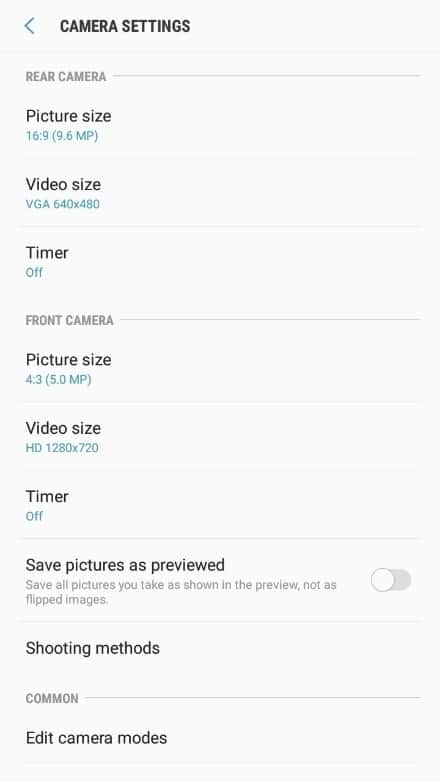But there’s a problem. You noticed your pictures on Twitter are coming up blurry, a pixelated mess that doesn’t look good. It seems your picture has been compressed to some degree or perhaps an unforeseen root cause is to blame. This can be irritating, and rightfully so, especially if you’re in the business of sharing high-quality photos for your Twitter followers to see. If you’re using your Twitter page for business, can you imagine the negative impression a potential client could have if they saw a low-grade, pixelated mess of a picture you shared? If you were wondering why your pictures on Twitter showing up blurry, then continue on.
Why Is My Twitter Profile Picture Blurry
The reason your profile picture is blurry and loses quality after you post it is either the aspect ratio is incorrect so Twitter will compress your image. Or your file is over 2MB which means that it will be compressed. To avoid Twitter ruining the quality of your profile picture, you need to have the correct aspect ratio or you need to be uploading a picture that’s below 2MB. All profile pictures are constrained within 400 pixels (px) by 400 px so this results in compression especially when your original photo size is 4000 x 3000px for example. Twitter makes your photos blurry for the best user experience in photo loading, optimizing network connectivity, and taking up minimal space in the phone’s memory and drive. If Twitter didn’t pixelate or make your profile picture low quality, your Twitter pictures and profiles would look amazing, however, the user experience would be horrible. You’ll have a very slow, bloated app that you would start to hate so to prevent this, your images need to lose quality in order to give people the best user experience. There’s no way to change the upload quality of your photos on Twitter, it all depends on the quality of your camera. If your Twitter profile picture is blurry, this is because of Twitter’s compression feature. All stories uploaded to Twitter also experience compression and loss in quality so the best way to fix this is to upload high-quality stories so you don’t notice the compression as much.
Your Profile Picture isn’t Optimized
Your profile picture, aside from your header, is going to be the first picture people see; in fact, even before someone visits your page, your profile picture will be the only image they see until they see your header image. A blurry profile picture is the result of poor optimization, a side effect of Twitter most likely stretching the original image you uploaded. If you upload an image that’s too small, or low resolution, Twitter will then stretch the image to fit your profile window. To fix this problem, upload an image that’s of higher quality. You should certainly aim for Twitter’s limit of 2 MB for an image. The reason being is that a higher quality image doesn’t suffer from stretching, and shrinking a higher resolution photo isn’t going to cause blurry pixelation. And don’t go any lower than 400 by 400 pixels.
Your Header Image isn’t Optimized
There are two images a Twitter user sees when they visit your page: your profile picture and your header. Your header, for instance, is the image that spans the length of your profile page along the top. It’s akin to Facebook’s banner image. And the header image is very sensitive to an image’s dimensions. The header image can support a frame as low as 1252 by 626. What does that mean for your images? Should you upload a header image smaller than 1252 by 626, Twitter will take the liberty of stretching it out to fit the lost dimensions possible. Imagine stretching an image that’s 300 by 300 up to 1252 by 626. It isn’t going to look go at all. Even if you follow the lowest dimension Twitter supports, and you still get a blurry image, then the problem lies with the quality of the picture. You have 5 MB to work with as the limit of your header image; use it all.
Your Network Connection Timed Out
Not an uncommon problem, per say, but certainly a unique issue. You see, when you upload an image, it doesn’t upload all of the data at one time–it does so a little at a time. The strength of your connection helps chern the data faster. If your network times out while you’re still uploading, well, you could end up with a blurry image. The best solution for this is to check your network status. You may have to reboot your equipment, like your modem and router, and simply try again, like so:
Your Image isn’t Supported
Twitter doesn’t support a lot of different formats. As of the writing of this article, Twitter only supports JPEG, GIF and PNG file formats. If you anything but, then switch over to a different file format.
How to Fix Blurry Profile Picture on Twitter
Keeping the Right Aspect Ratio so Twitter Doesn’t Blur Your Profile Picture
You need to keep an aspect ratio of 4:5 so that Twitter doesn’t lower the quality of your picture. This will make the ideal photo size 1200px by 675px. This means that your photo will fill up the screen so it will keep the quality of the picture high. If you want to post a square picture, then you need to keep an aspect ratio of 1:1. This means that the photo size will be 1200px by 675px. If you want the aspect ratio for your Twitter profile picture, then you need to stick to 400px by 400px To do this with any photo you have, it’s best you use Adobe Lightroom because this already has a setting that will keep your picture at an aspect ratio of 16:9. If you want an aspect ratio of 1:1, then simply using your phone’s setting to crop will allow you to do this. 2. When choosing the aspect ratio, keep it at 16:9 or 1:1. 3. When exporting the photo, check Resize to Fit. 4. 1080px with a resolution of 72ppi. 5. Select Sharpen for Screen. 6. Select Export.
Maximize Your Phones Camera Settings to Improve Loss of Quality
The best way to prevent a huge loss of quality in your Twitter profile picture is to maximize your phone’s camera quality. Doing this means that you’ll have better quality profile pictures so when you upload them to Twitter and they do lose their quality, the difference wouldn’t be as bad if you didn’t make the quality better initially.
When you adjust the settings and max it out, Twitter will reduce the size of an image to fit its maximum rules. The maximum size of Twitter posts are 1080px so if you take images from the default camera, utilizing the best resolution will let you keep within the maximum size of posts.
Use a High Quality to Keep Quality High and Prevent Blur
Another thing you can do to keep the quality of your pictures high is to use a high-quality camera. This could either be a DSL camera that you’re using and this will allow you to keep the quality high straight away. Another great alternative is a new iPhone or Android. These devices have very advanced cameras and this will allow you to keep your picture quality high. When you do upload the picture, rather than Twitter making it blurry, the picture will lose quality but it will still be of great quality compared to other people’s posts that don’t use high-quality cameras.
Use Twitter’s Camera to Prevent Loss of Quality
If you’re using another Camera app, maybe you can consider using Twitter’s default camera app. Although there isn’t much you can do with the default camera of Twitter, it takes pretty decent profile pictures that are high-res. This follows the previous method’s technique in taking a high-resolution photo and the post will just be adjusted upon upload to the platform. Your profile picture isn’t going to be any less pixelated but you’ll see how they’re going to turn on as soon as you take the picture as opposed to when you upload them and feel the huge drop in quality.
Don’t Share the Photo Before Uploading to Prevent Initial Blurring
If you’re exchanging photos through Twitter Messenger or WhatsApp, there’s a hundred percent chance that the media content gets compressed. Twitter and WhatsApp do this in order to keep the experience smooth sacrifices some of the content quality of the photos and videos. I know I’m guilty of this because I always send photos through WhatsApp so I didn’t realize that the media gets compressed until I dug into the file directory. Sharing on apps before you post on Twitter will cause initial compression so when you do go to Twitter and post the already compressed photo, then it could come out pixelated due to Twitter’s further compression. Alternatives to this can be sharing the file through Bluetooth, or uploading it via Google Drive or iCloud.
Update your Twitter App If Your Profile Picture Is Blurring More Than Usual
One way you may be experiencing some poor image quality is if the app version you’re using is outdated. Consider going to Google Play or iTunes App Store and download the latest version of Twitter. The app updates from time to time so you can check back to the app page of Twitter for the latest version. You can also consider updating your device if you’re using an older unit. Older units have an older version of Android or iOS which may not have the capabilities needed to run a more recent version of the Twitter app.
Use Other Photo editing Apps With Pre-Sets to Keep Quality High
There are many other third-party apps and programs that you can use for your perfect Twitter post. If you’ve seen the vivid and beautiful images by many of today’s Twitter influencers, then you can bet a few of them would have used a third party app or program. If you’re on your phone or a desktop, you can use Canva. They already considered Twitter’s pre-set structures and framework so their templates are very good in quality. I use this whenever I need a quick edit because the templates are ready to go. Canva really compliments Twitter and other apps that allow you to post images and content. Canva has a mobile app that lets you do the editing on your phone so you don’t need to change screens or access your laptop or desktop.


